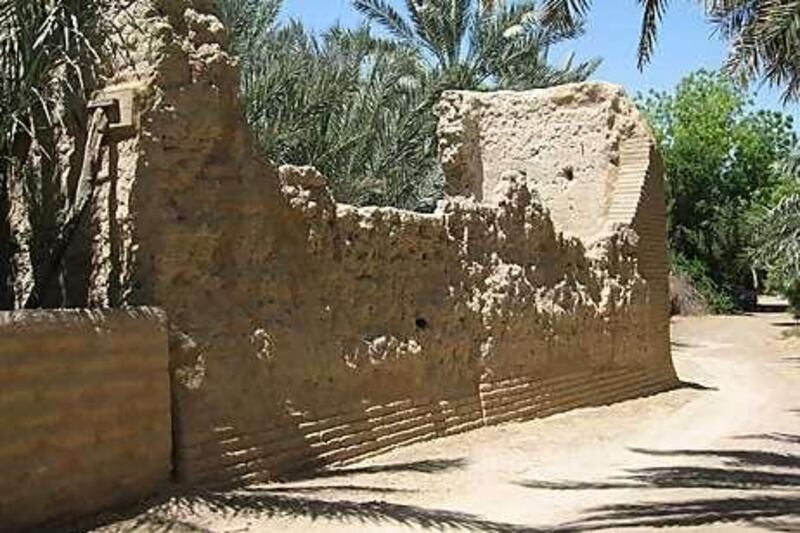ABU DHABI // The first stage of an elaborate effort to preserve the emirate's historic buildings has been completed. Archaeologists strengthened the structures of several deserted homes in Al Ain, buildings made of mud bricks and palm tree trunks that had lost their roofs and were threatened by exposure to storms.
The work was part of the Emergency Conservation Programme set up two years ago by the Abu Dhabi Authority for Culture and Heritage (Adach) to work on 25 buildings in the emirate in desperate need of repair. Adach's strategic plan is to have 30 per cent of Abu Dhabi's historic buildings and sites conserved within five years. Mohammed Khalaf al Mazrouei, the director general of Adach, said the buildings were part of the UAE's "tangible heritage" and it was essential to ensure they were protected according to international standards.
"A number of important conservation projects are currently being implemented, with a particular emphasis on sites of historic buildings," he said. Structures, including the Abdullah bin Salem al Darmarki House, a seven-bedroom property once used to protect the Qattarra oasis and farm, the house of Khalfan and Saif al Dhahiri, believed to be 150 years old, and the Bin Shehail al Mottawa al Dhahiri House on the western edge of the Al Ain oasis along a public pathway near Sheikh Zayed Palace Museum, were part of the preservation effort.
Such structures are typical of historic buildings in Al Ain that were built from mud bricks and mortar, reflecting the traditional architecture of the region. An archeological team, with the help of an expert in construction of mud buildings, analysed the structural condition of the houses before adding support to the standing walls. New retaining walls were built from mud bricks to maintain the historic context while providing the desired protection, explained Dr Sami al Masri, deputy director general for arts, culture and heritage at Adach.
Dr Hossam Mahdy, the building conservation supervisor who is overseeing the project, said it was unusual to intervene so quickly before a complete analysis was done, but the work in Al Ain was urgent. "Normally, we conduct a lot of study before we touch the buildings, but there were close to 140 tasks that were urgent. We could not wait. We took the minimum intervention to make sure we maintain them."
The result meant the buildings were stabilised against further damage. The aim was not to completely restore the buildings, said Dr Mahdy. "In some cases, we do not know what the complete shape of the buildings were like so we could not reconstruct them," he said. "Also, it is not always advisable to do so because we need to keep the authenticity of the building alive." They hope to restore the buildings so they can be safely viewed by the public and studied by historians and archaeologists.
After two years of such work, the Bin Shehail House is now open to visitors. The conservation team is also working on mud brick structures on Delma Island and in Liwa Oasis, as well as the restoration of Qasr al Hosn in Abu Dhabi city. @Email:aseaman@thenational.ae






